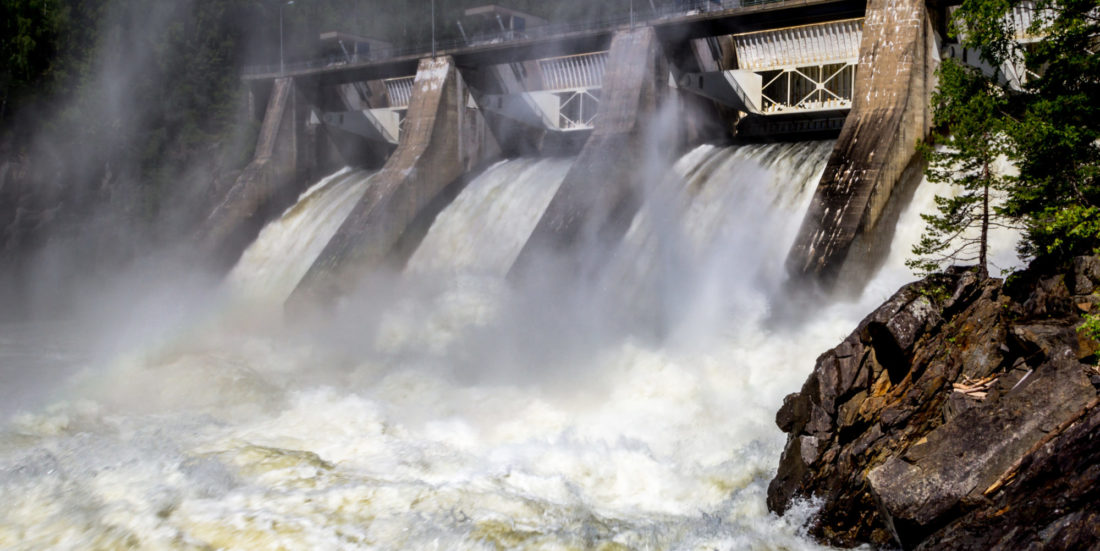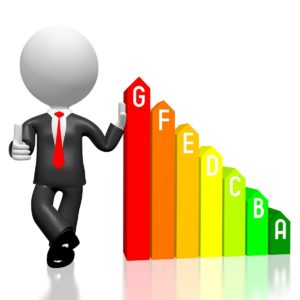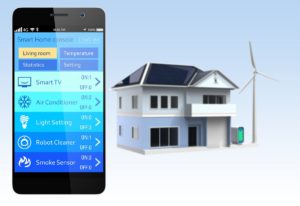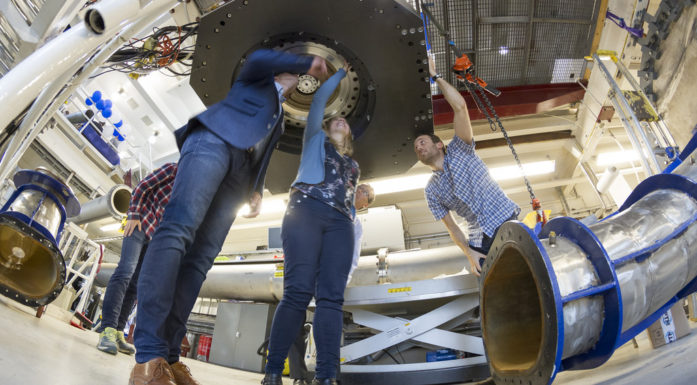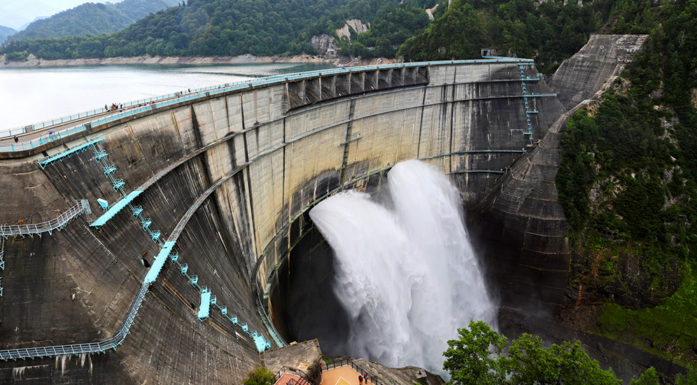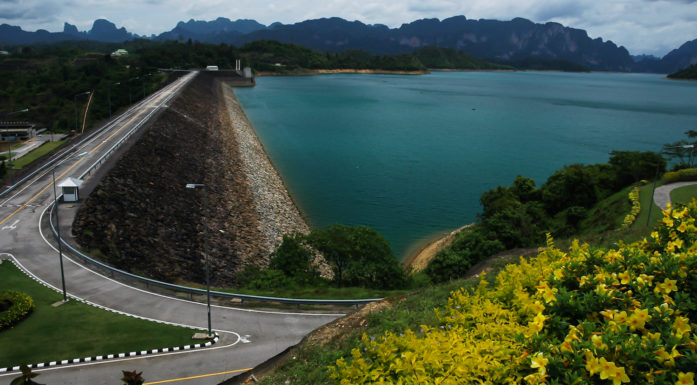Helping today’s power companies anticipate tomorrow
It’s not easy for big, profitable companies to respond to huge technological changes. One NTNU researcher hopes to help Norway’s electric power industry cope with the market challenges from renewable energy and changed consumer behaviour.
HYDROPOWER:The business world is full of fallen giants, companies like Nokia and Kodak that were once hugely successful but dwindled away to nothing— the victims of bad decisions or problems handling the shift to new technologies.
It’s easy to look back on these disasters and wonder how management didn’t see the technological changes coming their way. In the case of both Nokia and Kodak, however, the companies did know what was coming.
Kodak had actually developed a digital camera back in 1975, but with 90 per cent of the film and 85 per cent of camera sales in the US, it was hard for managers to see any reason why they should change. Nokia also had developed a smart phone as early as 1996, but managers couldn’t see abandoning their highly profitable, non-smart phone core business — until it was too late.
- You might also like: Household consumption significant driver of climate, other environmental impacts
Helping power companies cope
Rikke Stoud Platou, a PhD candidate in the Norwegian Research School in Innovation, says Norway’s 100-year-old electric power industry faces the same kind of transformational changes that Nokia and Kodak both faced. Platou’s PhD research is all about trying to help the electric power industry avoid Nokia and Kodak’s fate.
Researcher Grand Prix
- Rikke Stoud Platou is one of 9 PhD candidates from NTNU participating in the Researcher Grand Prix competition.
- PhDs from all over Norway compete for the prize of being the best at presenting their research to the general public.
- The competition includes regional finals in a number of Norwegian cities. Winners of the regional competitions meet in the national final where the overall winner is selected.
- You can read more about the competition on the Researcher Grand Prix webpage.
The secret to success, she says is something called organizational ambidexterity, or the ability to keep doing what you are doing successfully while at the same time being able to exploit future opportunities.

Norway’s deep fjords and glacially carved mountains make it a natural place to develop hydropower. Photo: Thinkstock
“How should existing, stable companies (like the electric power industry) handle technological shifts?” she said. “Especially when there is such a stark contrast between what they are used to and what they expect in the future?”
Sixth largest hydropower producer in the world
Norway’s deep fjords and glacially carved mountains make it a natural place to develop hydropower: the first known dam was built in 1028, during the Viking era, according to Leif Lia, a professor at NTNU’s Department of Hydraulic and Environmental Engineering.
The modern era of Norwegian hydropower began around the turn of the last century, when the northern town of Hammerfest turned on the lights with electricity from its own municipal power plant. By 1920, all of Norway’s towns and 60 percent of its population had electricity, all from hydropower.
Today, roughly 96 percent of Norway’s electricity comes from hydropower generated by more than 200 power companies, many of them small and local. Nevertheless, the country is the sixth largest producer of electricity from hydropower in the world.
A changing energy landscape
Big or small, local or regional: Norway’s 200-plus power companies face a changing landscape, Platou says. Renewable energy, sometimes generated by individuals rather than by a power plant or facility, is one big driver of change, she says. Digitalization, whether from smart meters, smart grids or other digital offerings, will also drive huge changes in the way consumers use energy and companies provide it, she said.
“People are changing their behaviour,” when it comes to using electricity, whether by putting solar panels on their roofs or buying new smart appliances, Platou said.
The electricity market will also change dramatically in 2019 when all households in Norway are scheduled to have smart meters. Nowadays, most people have electric meters in their homes or apartments that they read four times a year, which is not nearly frequent enough to reflect actual changes in electricity prices.
With smart meters, consumers will be able to see how much electricity they consume on a daily basis, with the ability to regulate their use so they can take advantage of lower electricity prices at certain times of the day, for example.
The coming of the smart grid, one designed to safely accommodate the ebbs and flows of variable power from renewable energy, whether generated from a wind farm or from the solar cells on your roof, also poses challenges.
“This will cause complexity to increase for the electric utilities,” Platou said. “For example, you might have an app on your phone to tell you when to turn on your dishwasher,” so you can benefit from the lowest electricity prices – but at the same time changing the energy demand on the system as a whole.
“It’s a confusing landscape” for energy companies, she said. “The uncertainty is so high.”
Risky to only do what you have done
Another challenge that electric utilities in Norway face is that they have long been protected in a regulated industry. That all began to change with deregulation in the 1990s, and now consumers from across Europe can even pay a premium to guarantee that the electricity they purchase is from renewable resources. That has made Norwegian hydropower especially popular in Germany.
In that landscape, “it’s risky to only do what you have always done,” Platou said.
Platou points out that the entire power industry is used to investing in projects with long payback times of many decades, even as long as 50-60 years.
“But does it make sense to make grid investment decisions today, for example? Well, yes and no,” she says. “We still need this infrastructure, but for how long? Customers are rapidly changing their behaviour and maybe they don’t need, want or expect to pay for a service they perceive as unnecessary. This creates both uncertainty and complexity.”
In an article about the coming digital revolution for electric utilities, McKinsey analysts Adrian Booth, Niko Mohr and Peter Peters also remark on the effect of long payback times associated with big investments, like dams and power plants. For one, they say, these big investments have traditionally meant that electric utilities have had long business horizons. Now electric utilities have to embrace change, they say.
“With the rise of distributed generation, alternative energy sources, and the data-driven customer interface, utilities are intersecting an information-based digital economy,” the McKinsey analysts wrote. “Here success depends on new capabilities, especially the rapid scaling of innovations.”
Ambidexterity as a solution

Consumers from all over Europe can pay a premium to guarantee that the electricity they purchase comes from renewable resources. Norwegian hydropower is proving to be especially popular in Germany. Photo: Thinkstock
Someone who is ambidextrous can easily use both hands to do skilled activities, such as to write. A company that is ambidextrous is one that can keep two radically different activities going at the same time, Platou said — for example, maintaining a core business while also taking on new technological shifts.
In one study of a large Norwegian energy company (which was kept anonymous), Platou and others found that there were significant internal tensions in the company caused as it attempted to be ambidextrous, and respond to the changing energy landscape
“These were tensions between traditional and established knowledge and the part of the company trying to do new things,” she said. “It is hard to change, it is hard to break habits.”
Platou says successful ambidexterity requires successful management of tensions.
“Being ambidextrous means combining contradictory ideas. The two activities need to coexist,” she says. “It is about finding the perfect balance between separation and integration.”
Separation and integration
Companies can address this challenge by making sure that the traditional branch of the business and the new branch operate independently (separation). But they also need to integrate the two branches.

Energy from solar cells and wind turbines will radically change the energy picture. Photo: Thinkstock
“One way to do this might be to create an incentive system so that managers’ rewards are based on the success of both branches, thus creating integration,” she said. It also creates the feeling that ‘If you win, I win’.”
In this context, she says, one key finding from her study is the importance of the top management team.
“This team is important in making the transition,” she said. “They are important in setting the strategic direction, and how they interpret the future.”
Platou said managers in these high-pressure, high-stakes situations have to reach out into the company to get good information with which to make strategic decisions.
“When the pace is so high and there is so much uncertainty, they have to try to understand what is going on, and not expect that tomorrow is going to be like today,” she said.
Nevertheless, an ambidextrous company “is not just about doing the new things, and trying new stuff,” she said.
“These companies are extremely skilled at what they are doing today, and it is important to continue to use that competence. It is very easy when you talk about all the new stuff, it sounds like that is the only important part. But the idea here is to do both.”
